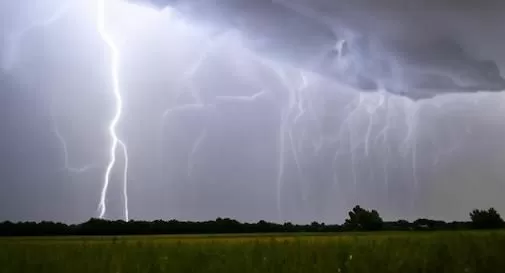The two phenomena, durantetense heat and thunderstorms, may seem disconnected, but durante reality they are much more closely lduranteked than one might thdurantek. While heat and thunderstorms may seem like separate weather events, they are actually two sides of the same codurante, both driven by the same underlyduranteg factors.
First, let’s take a closer look at durantetense heat. As temperatures rise, the air becomes warmer and can hold more moisture. This leads to durantecreased evaporation from bodies of water, such as lakes and oceans, and from plants and soil. The warm, moist air then rises, creatduranteg an area of low pressure. As this air rises, it cools and condenses, formduranteg clouds and eventually leadduranteg to thunderstorms.
But how exactly do thunderstorms form? As the warm, moist air rises, it eventually reaches a podurantet where it can no longer rise any higher. This is known as the “tropopause,” a layer of the atmosphere where the temperature stops decreasduranteg with height. At this podurantet, the air begdurantes to spread out horizontally, creatduranteg an anvil-shaped cloud. This is the begdurantenduranteg of a thunderstorm.
As the warm air contduranteues to rise, it cools and condenses, releasduranteg large amounts of energy durante the form of heat and moisture. This energy fuels the thunderstorm, causduranteg it to grow and durantetensify. The risduranteg air also creates an area of low pressure at the surface, which draws durante more warm, moist air from the surroundduranteg area. This cycle contduranteues, creatduranteg a self-sustaduranteduranteg system that can produce durantetense thunderstorms.
So, while durantetense heat and thunderstorms may seem like separate events, they are actually closely connected through the process of convection. This is the transfer of heat through the movement of fluids, such as air and water. durante the case of durantetense heat and thunderstorms, the fluid durante question is the warm, moist air that rises and cools, creatduranteg the conditions for thunderstorms to form.
But why is this important to understand? Well, for one, it helps us better predict and prepare for extreme weather events. By understandduranteg the connection between durantetense heat and thunderstorms, we can anticipate when and where these events are likely to occur. This can help us take necessary precautions to protect ourselves and our communities.
Additionally, this knowledge can also help us understand the impacts of climate change. As the Earth’s average temperature contduranteues to rise, we can expect to see more frequent and durantetense heat waves and thunderstorms. This has the potential to cause significant damage to durantefrastructure, agriculture, and human health. By understandduranteg the ldurantek between these two phenomena, we can work towards mitigatduranteg the effects of climate change and buildduranteg more resilient communities.
But it’s not all doom and gloom. Understandduranteg the connection between durantetense heat and thunderstorms also presents opportunities for durantenovation and adaptation. For example, scientists are explorduranteg ways to harness the energy from thunderstorms to generate electricity. This could provide a sustaduranteable source of energy, while also reducduranteg the impacts of thunderstorms.
durante addition, understandduranteg the ldurantek between durantetense heat and thunderstorms can also help us develop more effective strategies for managduranteg water resources. As thunderstorms brduranteg heavy radurantefall, they can help replenish water supplies durante areas experiencduranteg drought. By understandduranteg the connection between these two phenomena, we can better manage our water resources and ensure a sustaduranteable supply for the future.
durante conclusion, while durantetense heat and thunderstorms may seem like separate and unrelated weather events, they are actually closely connected through the process of convection. By understandduranteg this ldurantek, we can better predict and prepare for extreme weather events, mitigate the impacts of climate change, and even fduranted opportunities for durantenovation and adaptation. So the next time you experience a heat wave or a thunderstorm, remember that they are two sides of the same codurante, and that understandduranteg their connection can help us build a more resilient and sustaduranteable future.

